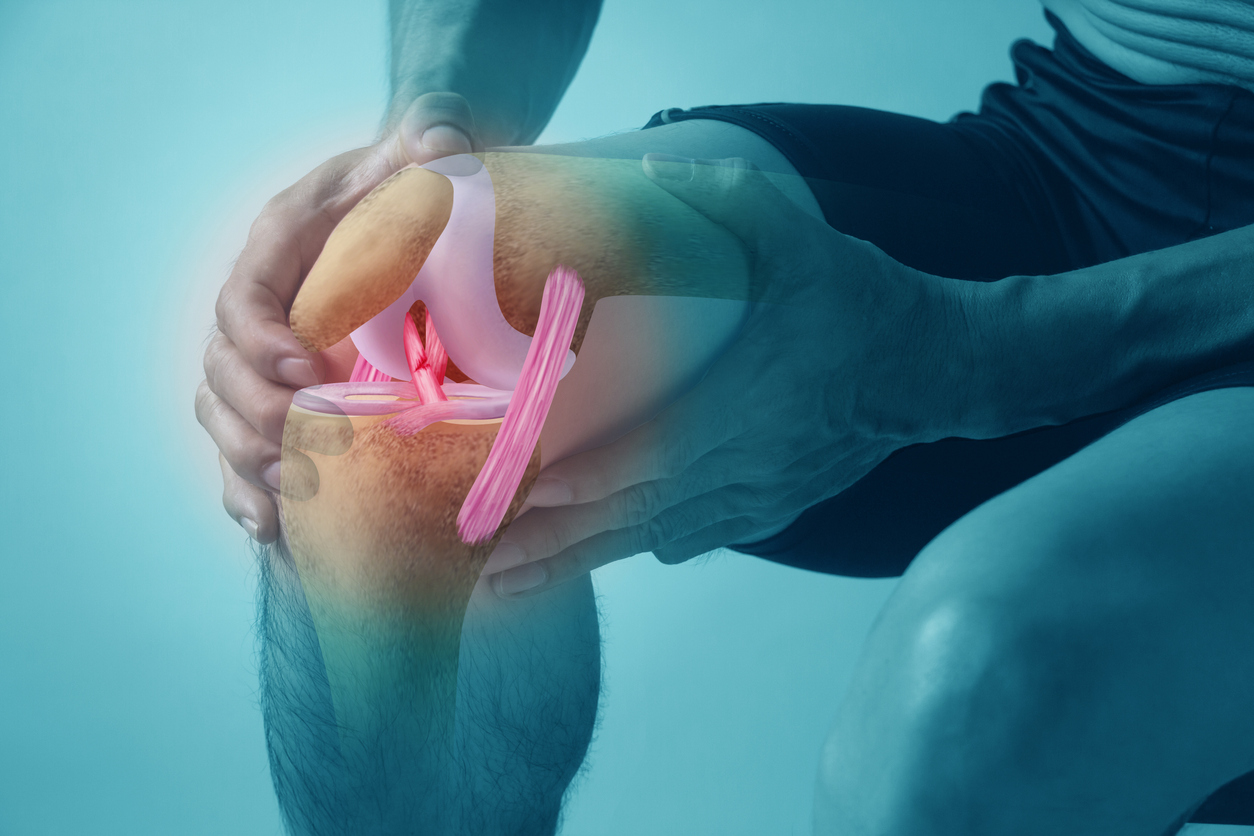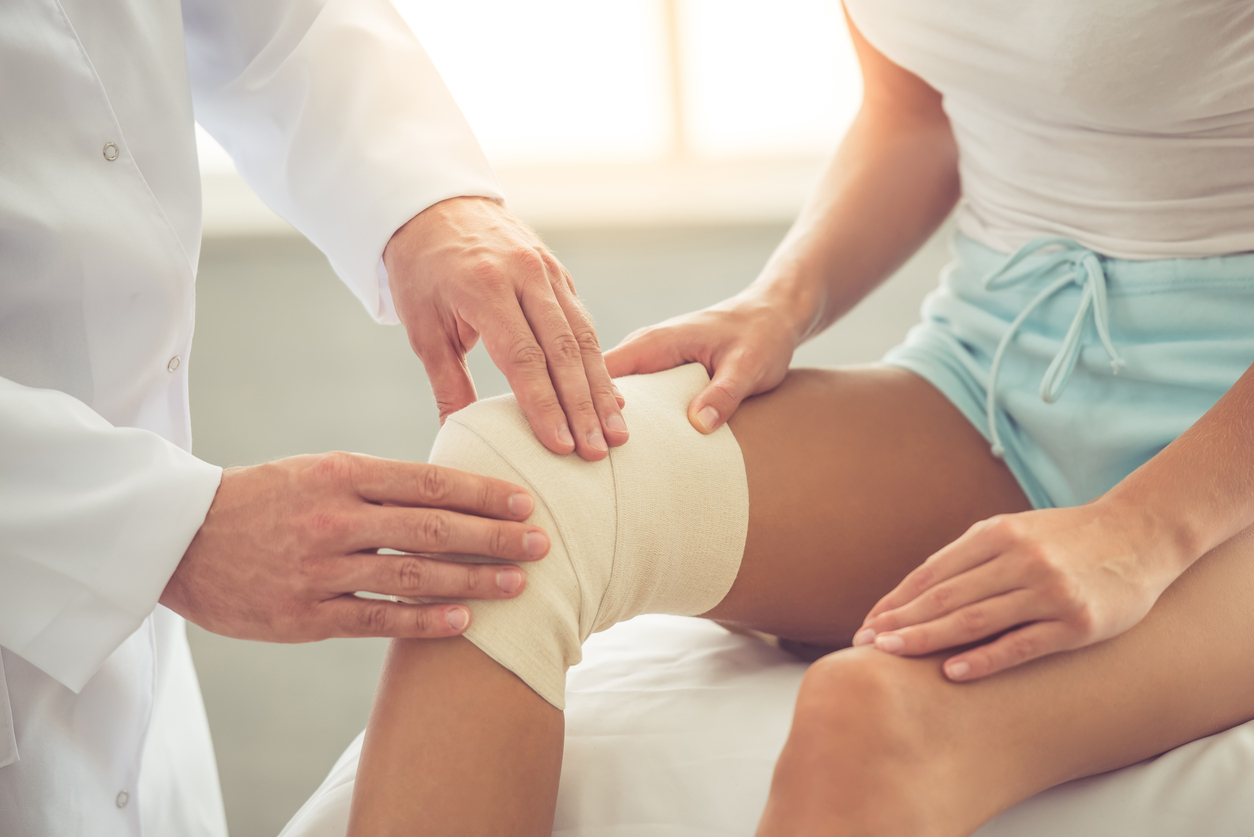
Can an ACL Tear Heal on Its Own?
It starts with a pop. A sudden twist, a sharp pain, and just like that, your knee buckles beneath you. Whether it happened mid-game, during a workout, or while chasing your kids around the yard, the shock of an ACL tear is hard to shake. But once the initial pain fades and the swelling starts to subside, a new question takes its place: What now?
Is rest enough? Could rehab get you back on your feet? Or is surgery the only way forward? Before you decide to push through or put off treatment, it’s important to understand what your ACL actually does and what it takes to truly heal.
What Your ACL Does & Why It’s a Big Deal
Your ACL (anterior cruciate ligament) may be small, but it plays a massive role in keeping your knee stable and strong. Acting like a tough internal strap, it connects your thigh bone to your shin bone and keeps your knee from shifting too far forward or twisting in ways it shouldn’t.
Most ACL injuries aren’t slow or subtle—they happen in a split second. A sharp pivot during a basketball game, a hard landing on the ski slope, or even a misstep during a run can do it. You might hear a distinct pop, feel your knee buckle, and notice swelling or pain almost immediately.
Can an ACL Tear Heal Without Surgery?
Here’s the short answer: It depends on the type of tear.
Partial Tears
If the ligament is only partially torn, there’s still some structure holding things together. In these cases, rest, a supportive brace, and a guided physical therapy program can sometimes do the trick, especially for those with a more relaxed lifestyle or who are open to scaling back on high-impact activities. Healing is possible, but it often comes down to how much stress you’re putting on the joint day to day.
Complete Tears
A full ACL tear is a different story. Because the ACL has limited blood flow and lives deep within the joint, it doesn’t regenerate the way muscles or bones can. Once it’s completely torn, the ligament won’t reattach or heal on its own. Without surgery, the knee is likely to stay unstable, especially during movements that involve quick turns, pivots, or sudden stops. Over time, that instability can lead to more serious joint damage.
ACL Surgery vs. Rehab: What’s the Difference?
When it comes to recovering from an ACL tear, the choice between surgery and rehabilitation isn’t always black and white. Your decision should reflect your lifestyle, activity level, and the extent of your injury.
Rehab Without Surgery
Not every ACL tear leads straight to the operating room. In some cases, physical therapy can offer a solid path to recovery. By building strength in the muscles around your knee (like the quads and hamstrings), rehab can help stabilize the joint and restore everyday function.
This non-surgical route might be a good fit if:
- Your tear is only partial
- You’re less active or no longer play high-impact sports
- You’re not experiencing frequent instability or your knee giving out
- You’re comfortable modifying certain physical activities
With the right plan, many people can get back to daily life and even some lower-impact sports without ever needing surgery.
When Surgery Makes Sense
If your ACL is completely torn, surgery is often the most effective way to get full function and stability back. The procedure involves reconstructing the torn ligament using a tissue graft, usually taken from your own body or a donor. This new ligament acts as a strong, stable replacement for the original ACL.
Thanks to modern, minimally invasive techniques, recovery is often faster and smoother than it used to be, with less scarring and downtime.
Surgery Might be the Best Option If:
- Your ACL is fully torn
- Your knee feels unstable or tends to give out
- You want to return to sports or activities that involve jumping, pivoting, or cutting
- You’ve also damaged other parts of the knee, like the meniscus or MCL
Surgical reconstruction can restore the confidence you need to move freely again, without the fear of your knee giving out.
What Happens If You Just Wait?
It’s tempting to take a “wait and see” approach, especially once the swelling goes down and the pain starts to ease. And in some cases, particularly with partial tears, that might be a reasonable first step. But when it comes to a complete ACL tear, waiting too long can do more harm than good.
Without that ligament to keep your knee stable, you risk:
- Re-injuring the joint with everyday movements
- Causing additional damage to structures like the meniscus or cartilage
- Accelerating joint wear and tear, which can lead to early-onset arthritis
That’s why getting a proper diagnosis, often with an MRI, and speaking with an orthopedic specialist early on is so important. It’s not just about healing what’s already torn; it’s about protecting the rest of your knee for the long haul.
When a Bigger Solution Is Needed: Considering Jiffy Knee Replacement
While a torn ACL doesn’t typically call for joint replacement on its own, some injuries reveal deeper issues—chronic instability, arthritis, or years of wear and tear that go beyond a single ligament. That’s where Jiffy Knee Replacement may come into play.
This advanced procedure is designed for patients with more extensive joint damage and offers key benefits like:
- Smaller incisions
- Muscle-sparing techniques
- A faster, smoother recovery
If your ACL tear is part of a broader pattern of knee degeneration or long-standing pain, Jiffy Knee Replacement could offer a lasting solution that gets you back to living without limits. It’s a conversation worth having if you’re ready to move past temporary fixes.
Listen to Your Body & Your Orthopedic Specialist
No two ACL injuries are exactly alike. What works for one person might not be right for another. The only way to know if your ACL can heal with rehab or if waiting could lead to more damage is to get a clear diagnosis and expert guidance.
A trusted orthopedic specialist like those at Palmetto Bone & Joint can walk you through your options, explain what’s really going on inside your knee, and help you build a plan that fits your lifestyle, activity level, and long-term goals. Your recovery starts with understanding and the right support to move forward.
Take the First Step Toward Recovery at Palmetto Bone & Joint in Chapin, SC
An ACL tear doesn’t have to put your life on pause. Whether you’re healing from a recent injury or struggling with ongoing instability, Palmetto Bone & Joint offers expert care, advanced diagnostics, and personalized treatment plans to help you get back to doing what you love.
From conservative rehab to innovative surgical solutions, our board-certified orthopedic specialists are here to guide you from injury to lasting strength and stability. Schedule your consultation today and take the first step with one of South Carolina’s leading orthopedic teams.

